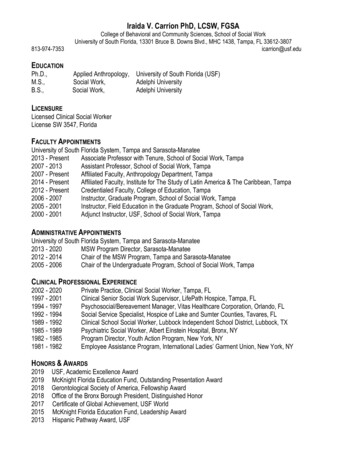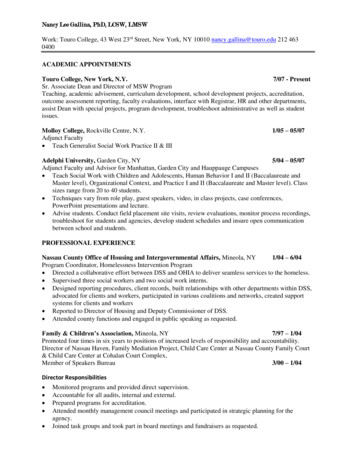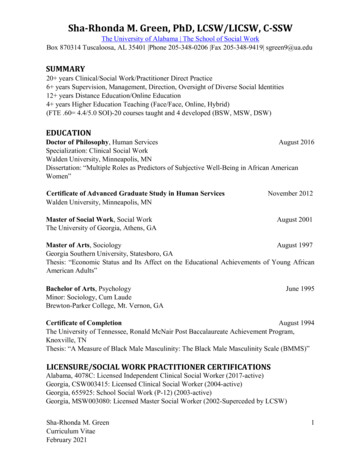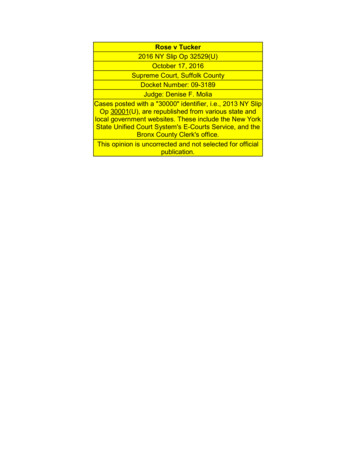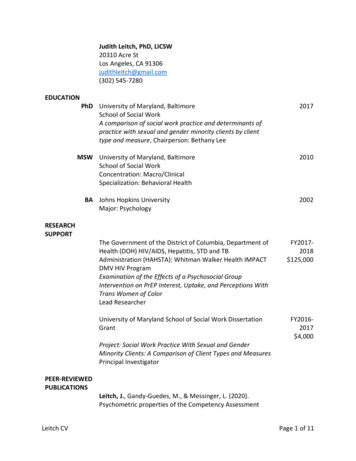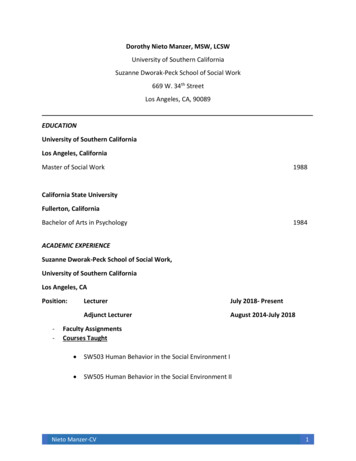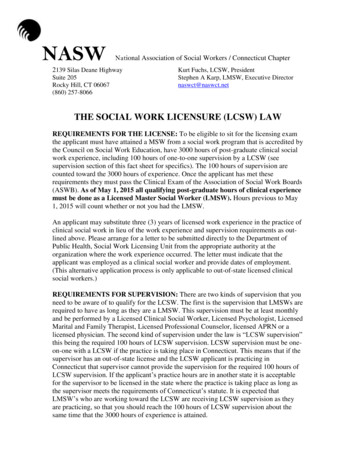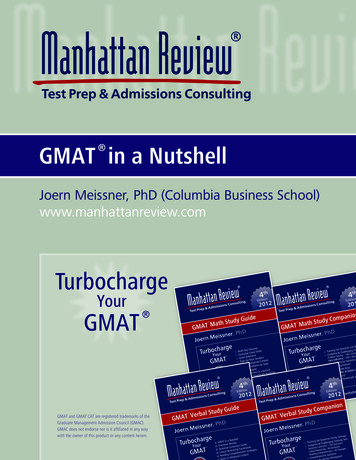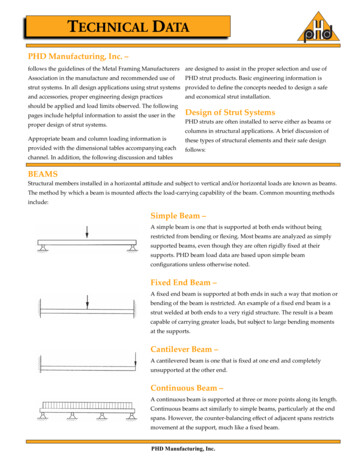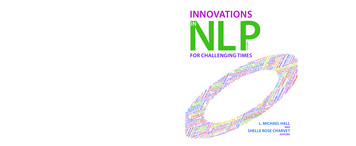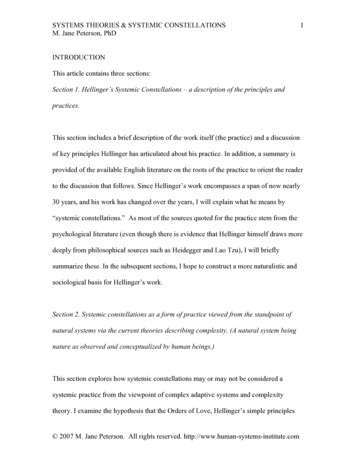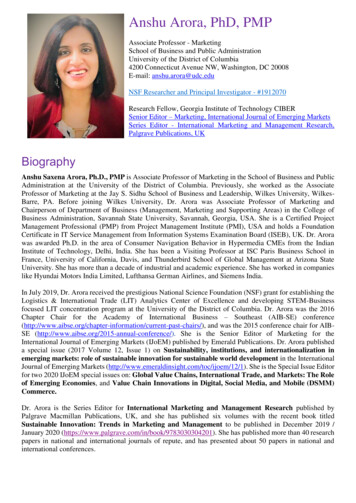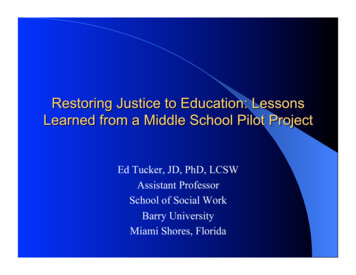
Transcription
Ed Tucker, JD, PhD, LCSWAssistant ProfessorSchool of Social WorkBarry UniversityMiami Shores, Florida
Zero Tolerance– Predetermined consequences for noncompliance with mandatorybehavior. Removes discretionary discipline decisions fromteachers and administrators. Most common consequences areexclusionary (i.e., suspension and expulsion). Disturbing Schools Statute– Section 16-17-420 makes it unlawful for any person “to interferewith or disturb in any way or in any place the students or teachersof any school to loiter about the premises or to act in anobnoxious manner thereon ”
South Carolina InSouth Carolina 7% of White students and 19% of Blackstudents were suspended from school in 2007 Only 19% of Black 8th graders were reading at grade level,compared to 46% of White 8th graders South Carolina spends more than twice as much per prisoner asper public school studentNationally (United States) Suspension/expulsion,academic failure, and dropping out fromschool are all predictors of future involvement in the criminaljustice system In the U.S., Black children are 50% more likely than Whitechildren to drop out of school In the U.S., a Black boy born in 2001 has a 1 in 3 chance ofgoing to prison in his lifetime
School violence is at a serious level and increasing, thus necessitatingforceful, no-nonsense strategies– Serious and deadly violence remain a relatively small portion of schooldisruptions, and the data have consistently indicated that schoolviolence has remained stable, or even decreased somewhat, sinceapproximately 1985Through the provision of mandated punishment for certain offenses, zerotolerance increases the consistency of school discipline and thereby theclarity of the disciplinary message to students– Rates of suspension and expulsion vary widely across schools andschool districts – and this variation appears to be due as much tocharacteristics of the schools and school personnel as to the behavior orattitudes of studentsRemoval of students who violate school rules will create a school climatemore conducive to learning for those students who remain– Indicators of school climate have shown the exact opposite effect –schools with higher rates of suspension/expulsion have less satisfactoryratings of school climate and have lower rates of academic achievementeven after controlling for demographics such as socioeconomic status
The swift and certain punishments of zero tolerance have adeterrent effect upon students, thus improving overall studentbehavior– School suspension actually predicts higher future rates ofmisbehavior and suspension among those students who aresuspended and is associated with a higher likelihood ofschool dropoutParents overwhelmingly support the implementation of zerotolerance policies to ensure the safety of schools, and studentsfeel safer knowing that transgressions will be dealt with in nouncertain terms– Data on this assumption are mixed and inconclusive
Undesirable physical condition of school Infrequent adult-student interactions Few instructional strategies used by teachers Low expectations for student success amongfaculty Negative perceptions of the school climate byfaculty/staff Negative perceptions of family involvement
Protects children with early aggression fromcontinuing on in violence 2 years laterProtects children with numerous environmental risksfrom violent and nonviolent offendingActs as a protective factor against substance abuse,emotional distress (including suicide attempts), andschool absenteeismPredicts higher academic achievement and schoolcompletionIs lower in schools with a harsh and punitivediscipline climate
Each conducted independent studies of zero tolerancepolicies in schoolsEach concluded that these policies fail to make schoolssafer and are more detrimental than advantageousEach called for the end of reliance on zero tolerance, andspecifically for limiting suspensions/expulsions to only themost egregious circumstances (e.g., when schools candemonstrate that these punishments are the only way toprevent the student from harming self or others)Each recommended the development of alternativediscipline practices that are individualized, thatdemonstrate the ability to correct (micro level) and deter(macro level) student misconduct, and that minimize thedisruption to the students’ educational process
Recognize the purposes of misbehavior Address the needs of those harmed Work to put right the harm Aim to improve the future Seek to heal Use collaborative processes
School was selected based on high suspensionrates, risk factors of students, and attitude/cooperation of PrincipalFour Restorative Practitioners (16 hours/weekeach): University of South Carolina MSWstudents with previous experience working withadolescents40 hours training in restorative practices prior tobeginning work with studentsManual: Hopkins, B (2004). Just schools: A wholeschool approach to restorative justice. JessicaKinsley, London.
The Principal is your friendAsk for everything at the beginning (minimumcommitments regarding training of teachers/admins./staff,use of circles in classrooms, conferencing procedures fordisciplinary matters, access to school data, etc.), bespecific, and put it in writingThe students will be less resistant than the adults in theschoolThe practitioners need to be confident and engaging (andnot just with the students)Identify allies, focus on them first, and then ask them torecruit others for youPersistence pays off
etucker@mail.barry.edu
each): University of South Carolina MSW students with previous experience working with adolescents 40 hours training in restorative practices prior to beginning work with students Manual: Hopkins, B (2004). Just schools: A whole school
